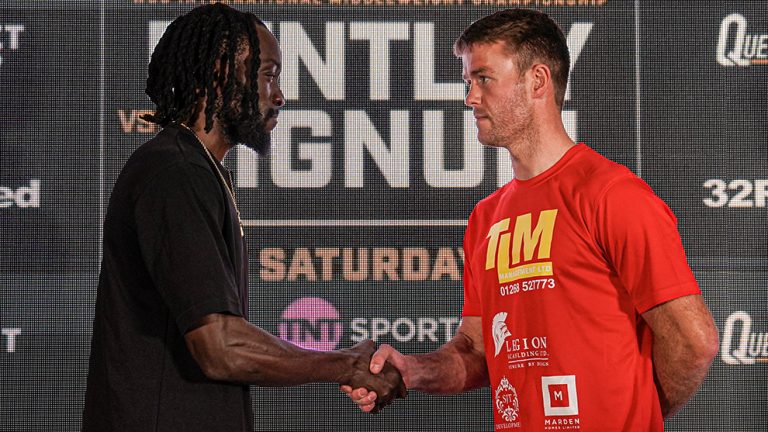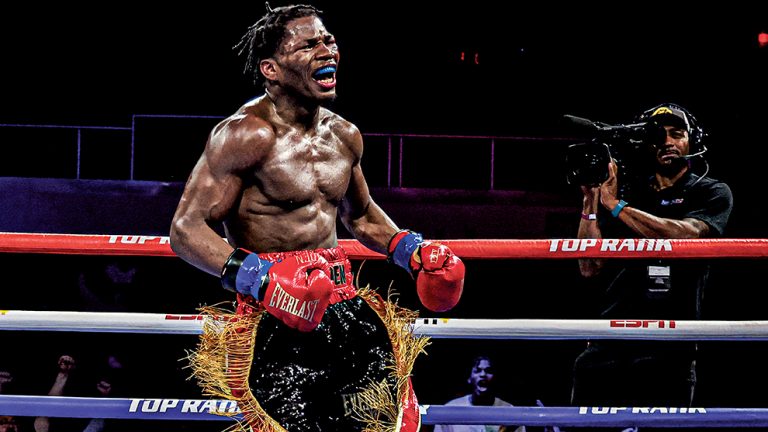Bunce Diary: Some of the best fighters started out boxing behind closed doors
By Steve Bunce
LAST week I was talking about the great Johnny Owen for a new film about the boxer’s short life and awful death.
Most people in boxing are familiar with the brutality and tragedy of his last fight with the Mexican, Lupe Pintor. It took place one night in Los Angeles, in a part of that city called Little Mexico, and if you have watched the end, you will never forget the end. There were 10,000 screaming for blood and a sacrifice that night inside the Olympic.
However, it was Owen’s fight for the British title behind closed doors at one of the private clubs in London’s West End that sparked a conversation. “Why was it there?” I was asked. It’s a good question and the answer is not simple.
In 1977, at the National Sporting Club in the Cafe Royal, just off Piccadilly, Owen stopped Paddy Maguire to win the British bantamweight title. It was Maguire’s first defence since beating Dave Needham to win the title at the World Sporting Club inside the Grosvenor House on Park Lane. It’s mad because Needham and Maguire were involved in big, popular fights in proper arenas before the retreat to secrecy and silence.
Obviously, Owen never had a following at that point in his career and, I guess, an unknown kid from Merthyr Tydfil fighting at a private club made sound financial sense. Johnny Owen never got paid what he was worth. Owen would have two more non-title fights at the NSC before fighting overseas and losing for the European title. In both those fights, Owen met very popular London fighters. I just can’t make sense of Owen meeting Wally Anglis and Dave Smith in private; they both packed fans in and the few security on the door at the NSC must have had a busy night keeping out Wally’s men.
When Owen beat Smith in June of 1978, the main event at the Cafe Royal for the few hundred bow-tied punters lucky enough to have tickets, featured Jim Watt in his 40th fight; ten months later, Watt won the WBC lightweight title. How does that make sense? It’s archaic, absurd and it never ended in the Seventies.
In 1993, I had to hire a kilt and then I was only allowed to watch Paul Weir in a world title fight from behind a camera position at Tommy Gilmour’s St. Andrews Sporting Club in Glasgow. It was a flashback. Weir came out surrounded by his sword-swirling Braveheart gang and they were a contrast to the gentleman at the club. There were no women in the club; I guess Weir’s warriors did have kilts on.
There is a long, long list of great fighters and popular men in fights behind closed doors in the late Sixties and Seventies. It’s endless once you start looking.
In 1968, just a few months after winning a gold medal at the Mexico Olympics, Chris Finnegan turned professional at the Hilton Hotel in Park Lane, home of the Anglo-American Sporting Club. It gets better or weirder, depending on where you stand. In 1971, about 200 metres north of the AASC on Park Lane, Finnegan fought Eddie Avoth for the British light-heavyweight title at the World Sporting Club inside the Grosvenor House. The fight finished in the 15th and final round and Finnegan was the champion. That fight now would be at the O2 and it would be totally sold-out. I wonder sometimes how boxing survived the darkest of days in the Seventies. There was also a ban by the British Boxing Board of Control on fights being shown live on television. It’s hard to invent this mayhem. British boxers were stitched up again and again in Europe, sold to the highest bidder once they won a world title, there was no live television and the biggest names vanished behind locked doors. There were, however, a dozen national newspaper boxing correspondents. They kept the sport going. It’s just madness.
Finnegan and Avoth took place the night before Jose Legra defended his European featherweight title against Jimmy Revie back down Park Lane at the AASC in the Hilton. Legra is one of the greatest lost fighters in our history; the fight against Revie was his 130th, but he would win the WBC featherweight title in his 141st fight. He is the Cuban king.
Revie lost on points to Legra and a few months later would lose his British featherweight title to Evan Armstrong at the WSC, that is the private male-only club in Park Lane’s Grosvenor House. My velvet penguin suit would have got a right pounding in the Seventies.
The very best British fighters from the Seventies fought behind closed doors. John Conteh had his first and second fights at the NSC and WSC, respectively. However, Charlie Magri and John H. Stracey were simply too popular for the cartel – as the legal business relationship between Mickey Duff, Terry Lawless, Jarvis Astaire and Mike Barrett was called – to let fight in secret. Stracey and Magri sold tickets for a combined 65 fights at the Royal Albert Hall and Wembley. Make no mistake, the two Eastenders were not fighting for the dubious pleasure of a few men in tuxedos holding cigars and watching in silence; they were gold at the box office. The others, well, they were just part of an old-fashioned business.
This Friday, at a sold-out York Hall, Chris Bourke and Ashley Lane will fight for the British bantamweight title that Owen, Maguire and Needham held. The trio would be happy the fight for their old title is not behind closed doors; it’s live on television and was available to anybody for 40 quid. That is change, I guess.



